
If you’re a North Carolinian, you know that our state is home to a diverse range of landscapes, from the sandy shores of the Outer Banks to the rolling hills of piedmont to the majestic peaks of the Appalachian Mountains. With all this variation in geography and climate, it can be tough to know the best grass seeds for North Carolina.
That is why we’ve put together this guide. Whether you’re dealing with hot and humid summers in the coastal plain or chilly winters in the mountains, certain grasses will thrive in your part of the state. So, let’s get started!
Grass in the Transition Zone
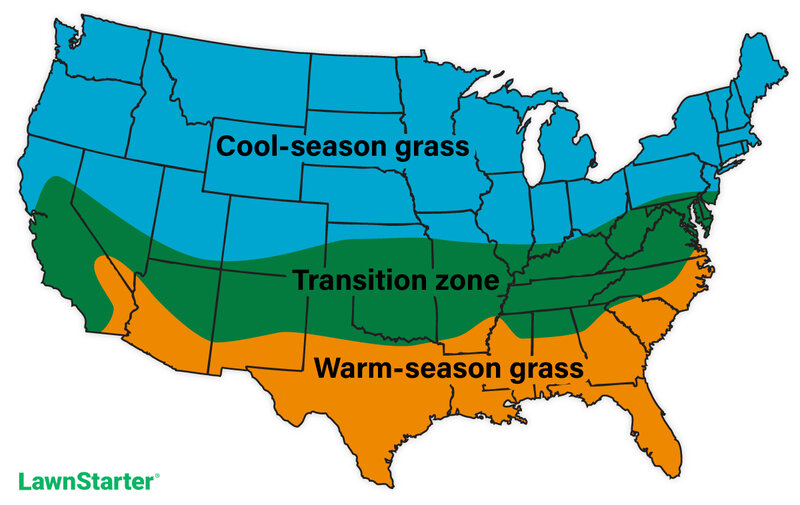
One of the unique things about North Carolina is that it falls within what’s known as the “transition zone” when it comes to grasses. This means that both cool-season and warm-season grasses can thrive in different parts of the state, depending on the specific region.
While this can make choosing the best grass seed for North Carolina a bit more challenging, it also means that you have a wider variety of options to choose from.
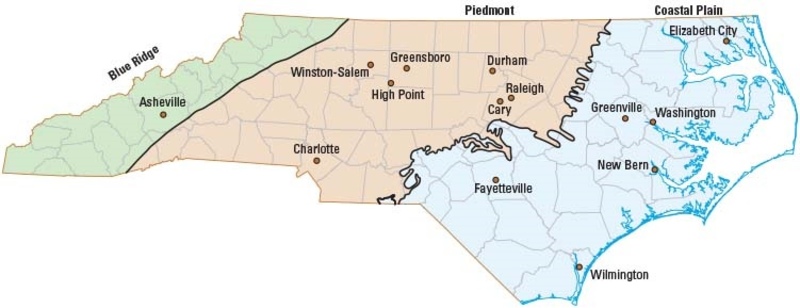
Cool-Season Grasses
Cool-season grasses are popular for many North Carolinians, particularly those in the mountain and piedmont regions. These grasses are known for their ability to grow during the year’s cooler months. This means they typically do best in the spring and fall when temperatures are milder and there is plenty of moisture.
The following are the best cool-season grasses for North Carolina:
Kentucky Bluegrass
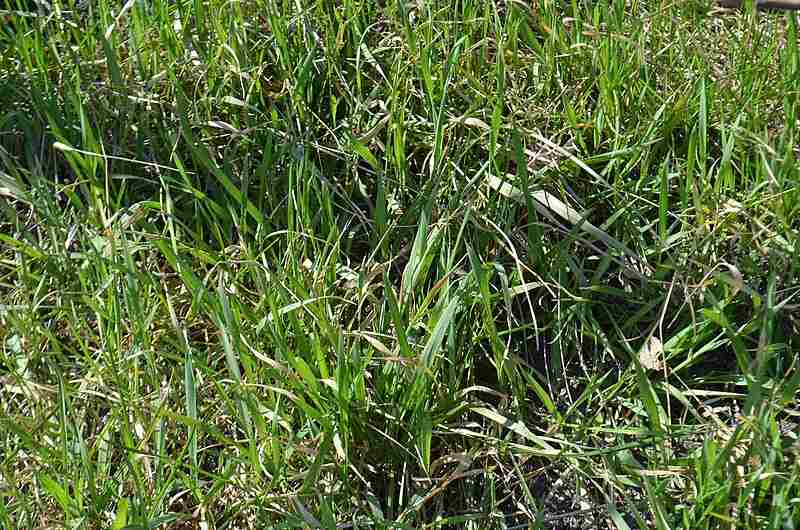
Photo Credit: Ethan2039 / Wikimedia Commons / CC BY-SA 4.0
Kentucky bluegrass is often the first choice for many homeowners in the mountain regions of North Carolina. This type of grass is known for its hardiness in the face of winter conditions and is often the last cool-season grass to go dormant as the temperatures start to drop.
Kentucky bluegrass forms a lush lawn with a dense appearance and a beautiful blue-green color. If cared for properly, it will look amazing on your lawn.
Classification: Cool-season grass
Spreads by: Rhizomes
Shade tolerance: Low
Drought tolerance: Moderate
Foot traffic tolerance: Moderate
Maintenance needs: Moderate mowing frequency and high fertilization needs.
Mowing height: Set mowing height between 1.5 and 2.5 inches when planted alone, and 2.5 to 3.5 when mixed with tall fescue.
Potential for disease: Moderate to high; prone to several diseases, such as dollar spot, leaf spot, necrotic ring spot, summer patch, and stripe smut.
Soil pH: 6-7.5
Soil type: Performs best in well-drained, heavy soils with high fertility.
Other notes: For the piedmont area, mix it with tall fescue for increased drought and heat tolerance.
Grass Seed Options:
– Jonathan Green (11970) Blue Panther Kentucky Bluegrass Grass Seed (3 lbs.)
– SeedRanch Midnight Kentucky Bluegrass Seed (5 lbs.)
Perennial Ryegrass
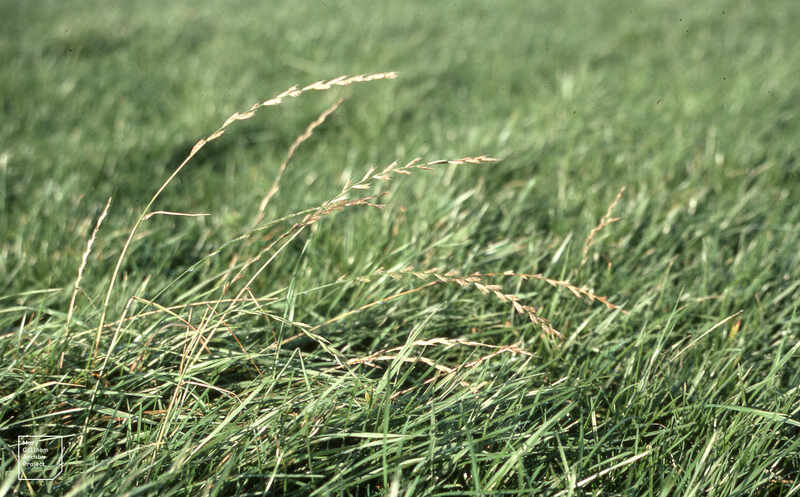
Photo Credit: Dr Mary Gillham Archive Project / Flickr / CC BY 2.0
If you’re looking for a cool-season grass that will quickly establish a lush, green lawn, perennial ryegrass may be the way to go. This grass spreads rapidly, filling in bare spots and creating a dense, even lawn in no time.
It’s important to note that perennial ryegrass is never seeded alone in North Carolina. Instead, it’s typically mixed with other grasses, like Kentucky bluegrass, since they look similar. By combining the two types of grass, homeowners can enjoy the quick establishment of perennial ryegrass and the hardiness of Kentucky bluegrass resulting in a fantastic lawn.
Classification: Cool-season grass
Spreads by: Has a bunch-type growth habit
Shade tolerance: Low
Drought tolerance: Low
Foot traffic tolerance: High
Maintenance needs: Moderate mowing and fertilization requirements. Thatch is not significant.
Mowing height: Set mowing height to 1.5 to 2.5 inches
Potential for disease: High. Common diseases include gray leaf spot, red thread, and leaf spot/melting-out.
Soil pH: Can grow in soils with a pH between 5 and 8, but prefers between 6 and 7.
Soil type: Prefers good drainage and fertility, but can tolerate some poor drainage.
Other notes: To achieve the best balance and visual appeal, the Kentucky bluegrass should make up 60% of the grass seed mixture by weight.
Grass Seed Options:
– Outsidepride Perennial Ryegrass Seed (5 lbs.)
– Eretz ProTurf Perennial Ryegrass Fine Lawn Seed (choose your size)
Tall Fescue

Aaron J. Patton, Ph.D. / Turfgrass Extension Specialist at Purdue University
Tall fescue is a popular cool-season grass in North Carolina, particularly in the mountain and piedmont regions. This type of grass is known for its relatively low maintenance requirements, making it a great choice for homeowners who want a beautiful lawn without the upkeep. It also tolerates a wide range of soil types and growing conditions.
Another advantage of tall fescue grass is that it can be mixed with other grasses, like Kentucky bluegrass or fine fescues, to create a diverse, resistant, and visually appealing lawn.
Classification: Cool-season grass
Spreads by: Produces short rhizomes but has a bunch-type growth habit
Shade tolerance: Moderate
Drought tolerance: Moderate to High
Foot traffic tolerance: Moderate
Maintenance needs: Frequent mowing. Does not produce significant thatch.
Mowing height: Set mowing height to 3 to 3.5 inches.
Potential for disease: Tolerant of most diseases when properly maintained.
Soil pH: 5.5-6.5
Soil type: Adapted to a wide range of soil conditions, but prefers fertile clay soils with good drainage.
Other notes: Since it is a bunch-type grass, any damaged areas or bare spots will need to be re-seeded.
Fine Fescues
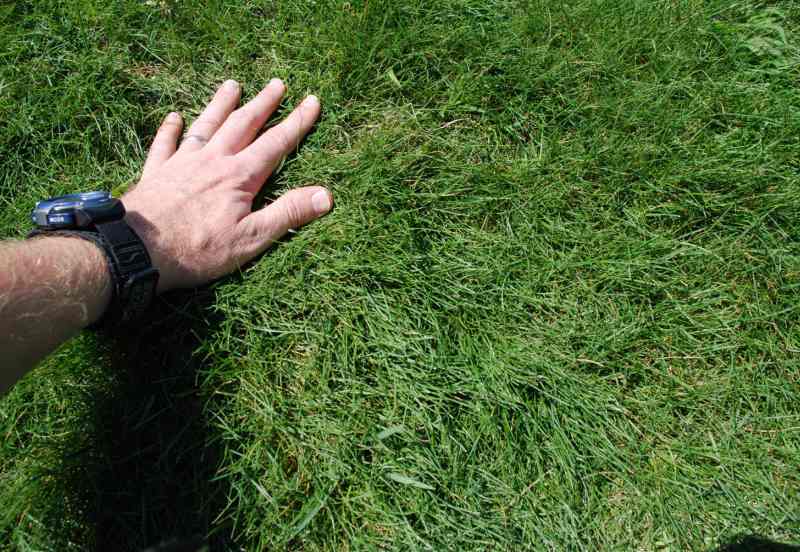
Aaron J. Patton, Ph.D. / Turfgrass Extension Specialist at Purdue University
Fine fescues are a group of cool-season grasses that include varieties such as creeping red fescue, chewings fescue, and hard fescue. They are known for their very finely textured and delicate appearance, but don’t be mistaken — they can tolerate moderate drought conditions.
Fine fescues are particularly well-suited to the mountain regions of North Carolina, where the cooler temperatures and moister soils provide ideal growing conditions. However, they can also be grown in the piedmont regions of the state.
Classification: Cool-season grass
Spreads by: Creeping red fescue spreads by rhizomes, while other fine fescues are bunch-type grasses, such as Chewings, hard, and sheep fescues.
Shade tolerance: Moderate to High, depending on species
Drought tolerance: Moderate to High, depending on species
Foot traffic tolerance: Low to Moderate, depending on species
Maintenance needs: Low fertilizer and mowing needs
Mowing height: Set mowing height between 1.5 and 2.5 inches when mixed with Kentucky bluegrass, and between 2.5 inches and higher when mixed with tall fescue.
Potential for disease: Moderate. Common diseases include red thread, leaf spot, dollar spot, summer patch, and powdery mildew.
Soil pH: 6-6.5
Soil type: Will not perform well in wet soil conditions. Prefers drier soils and tolerates a wide range of soil types and fertility.
Other notes: Most fine fescue species grow in bunches and can’t spread on their own. By mixing in Kentucky bluegrass, which has a spreading growth habit, you can help ensure that your lawn is filled in evenly and quickly.
Grass Seed Options:
– Triple-Play Tall Fescue Grass Seed Blend (5000 sq ft)
– Eretz Kentucky 31 K31 Tall Fescue Grass Seed (choose your size)
– Pennington The Rebels Tall Fescue Grass Seed Mix (7 lb.)
Warm-Season Grasses
Warm-season grasses are typically used in the coastal plain and the piedmont region of North Carolina. These grasses prefer warm temperatures and can thrive in this state’s high temperatures during summer. However, when temperatures drop, they enter dormancy and brown until the next growing season.
The following are the best warm-season grasses for North Carolina:
Bermudagrass
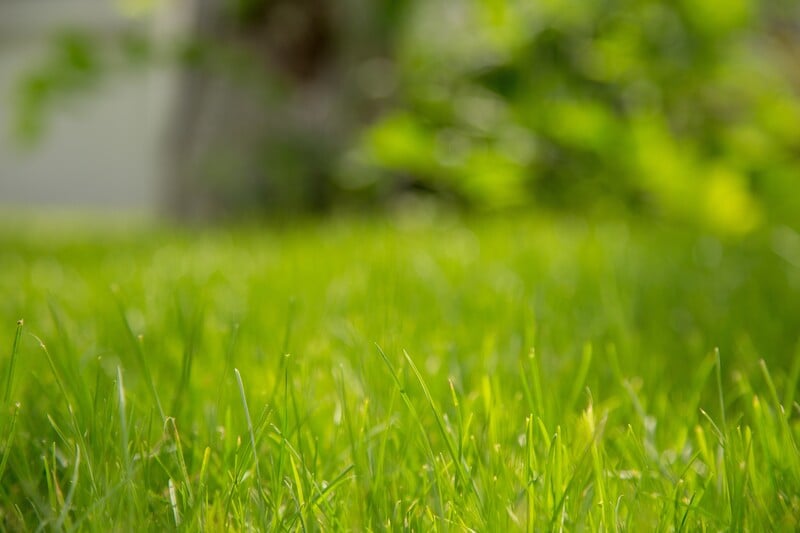
Photo Credit: Pexels
If you love hosting outdoor gatherings or barbecues (whether an Eastern or Lexington-style barbecue), then Bermudagrass may be the perfect grass type for you. This warm-season grass is known for being excellent in high-traffic areas, meaning it can handle the wear and tear that comes with frequent use.
One of the unique features of Bermuda is its fast growth rate, which is why it is often used on athletic fields and golf courses. However, this rapid growth can also make it a bit of a nuisance at times, as it may invade flower beds or other areas where it’s not wanted.
Classification: Warm-season grass
Spreads by: Stolons and rhizomes
Shade tolerance: Low; thrives in full sun
Drought tolerance: High
Foot traffic tolerance: High
Maintenance needs: Needs frequent mowing due to fast growth rate; develops thatch easily; needs regular fertilization
Mowing height: Set the mowing height between 0.5 and 1.5 inches for hybrid Bermudagrass cultivars. Mow common Bermudagrass down to 1.5 to 2.5 inches.
Potential for disease: Good resistance to disease, although diseases are common; low resistance to insects
Soil pH: 6-6.5
Soil type: Tolerates most soil types, including sandy soil.
Other notes: Common Bermudagrass can be seeded, but finely textured varieties are available in sod, sprigs, or plugs.
Grass Seed Options:
– Scotts Turf Builder Bermudagrass (10-lb. bag)
– Hancock Seed Co. Bermudagrass (50-lb. bag)
Zoysiagrass
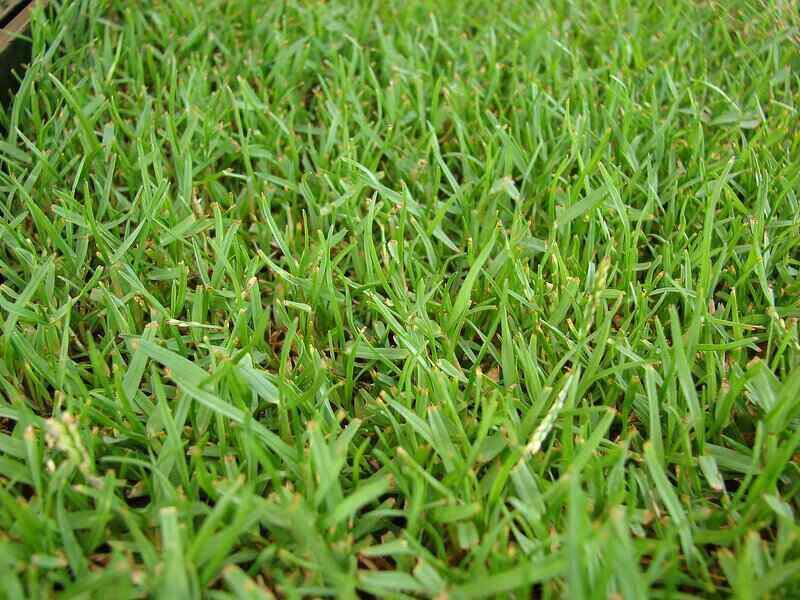
Photo Credit: Forest & Kim Starr / Wikimedia Commons / CC BY 3.0 US
Zoysiagrass forms a dense lawn and is a very drought-resistant grass, meaning it can survive with minimal irrigation after it has become established. This is particularly important in the coastal plain, where hot and dry summers can be challenging for many grasses.
One thing to remember when caring for Zoysia is that the blades are stiff, so your lawn mower blades should be sharp to avoid damaging the grass. But with the right care, this grass can be an excellent choice for North Carolina homeowners who want a visually appealing, carpeted lawn.
Classification: Warm-season grass
Spreads by: Stolons and rhizomes
Shade tolerance: Moderate
Drought tolerance: Moderate to High
Foot traffic tolerance: High, but recovers slowly from damage
Maintenance needs: Low nitrogen fertilization requirements, although, it’s prone to thatch build-up.
Mowing height: Set mowing height between 1 and 2 inches.
Potential for disease: Good disease tolerance overall
Soil pH: 6-6.5
Soil type: Well-draining, some cultivars are more tolerant of a wide range of soils than others.
Other notes: Zoysia usually has to be mowed with a rotary mower due to its coarse texture.
Grass Plug and Seed Options:
– Zoysia Plugs (50 Large Grass Plugs)
– Zoysia Plugs (50 Full & Lush Grass Plugs)
– Zoysia Plugs (100 Plugs)
– Zenith Zoysia Grass Seeds (1/8 lb. of seeds)
St. Augustinegrass
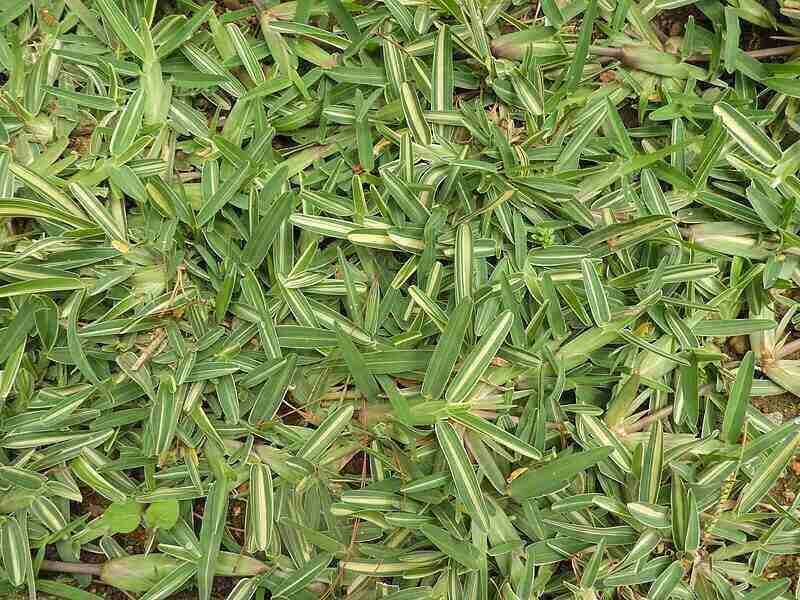
Photo Credit: Yercaud-elango / Wikimedia Commons / CC BY-SA 4.0
If you’re a North Carolina homeowner with trees that cast shade on your backyard, then St. Augustine may be the perfect grass type for you. This warm-season grass is known for being the most shade-tolerant of its kind, meaning it can grow well in areas with moderate sunlight.
St. Augustinegrass has a fast growth rate, so you’ll have a beautiful dark-green lawn in no time. However, on the flip side, it also requires frequent mowing to keep it looking its best.
Classification: Warm-season grass
Spreads by: Stolons
Shade tolerance: Moderate. It is the most shade-tolerant warm-season grass.
Drought tolerance: Moderate to High
Foot traffic tolerance: Low
Maintenance needs: Needs frequent mowing due to fast growth rate; develops thatch easily; needs regular fertilization.
Mowing height: Set the mowing height between 3 and 4 inches.
Potential for disease: Moderate to high
Soil pH: 6-7.5
Soil type: Tolerates many soil types; prefers moderately fertile and moist (not waterlogged) soils; doesn’t tolerate soil compaction.
Other notes: For eastern piedmont and western coastal plain regions, Raleigh is the most well-adapted cultivar.
Grass Plug Options:
– Seed Ranch St Augustine Seville Grass Plugs (2 Trays)
– Seed Ranch St Augustine Floratam Grass Plugs (2 Trays)
Centipedegrass
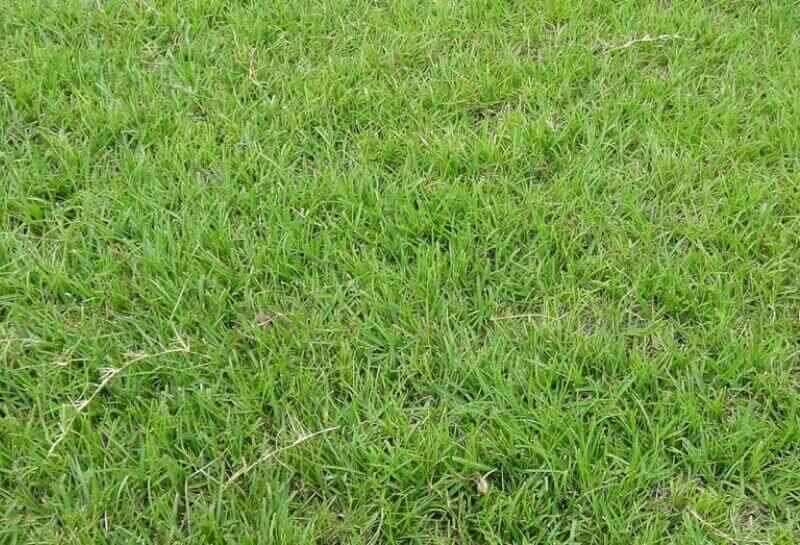
Photo credit: Michael Rivera / Wikimedia Commons / CC BY-SA 4.0
If you’re a North Carolina homeowner looking for a low-maintenance lawn option, then centipedegrass may be the perfect choice. This warm-season grass is known for its ability to thrive in the piedmont and coastal plain regions of the state, making it a popular choice for those looking for an easy-to-care-for lawn.
It’s important to keep in mind that centipedegrass is a slow-growing turf, which means you may need to be patient as your lawn establishes. Additionally, it may not be the best choice for areas with heavy foot traffic.
Classification: Warm-season grass
Spreads by: Stolons
Shade tolerance: Moderate
Drought tolerance: Moderate
Foot traffic tolerance: Low
Maintenance needs: Little fertilizing needs once established; develops thatch.
Mowing height: Set the mowing height between 1 and 2 inches.
Potential for disease: Good resistance to diseases and insects
Soil pH: 5-6
Soil type: Acidic, infertile, at least moderately good drainage (very dense, clay soils produce poor results)
Other notes: TifBlair is the quickest cultivar to establish and with the most cold tolerance.
Grass Seed Options:
– Gulf Kist Coated Centipedegrass Seeds (1 lb.)
– Scotts EZ Seed Patch and Repair Centipedegrass (3.75 lbs.)
– TifBlair Centipedegrass (5-lb. bag)
Best Grass Types for the Mountain Region
Living in the Appalachian Mountains region of North Carolina is a unique experience. With its stunning natural beauty, rugged terrain, and harsh winter temperatures, choosing the right grass type for your lawn is essential.
In this western part of the state, cool-season grasses are the best choice due to their ability to handle the colder temperatures and provide a visually appealing lawn year-round. They include:
- Kentucky bluegrass
- Perennial ryegrass
- Tall fescue
- Fine fescues
Best Grass Types for the Piedmont Region
If you live in the piedmont region, then you’re in luck — you’re able to grow both warm-season and cool-season grass varieties. With hot summers and milder winters than the mountain regions, this plateau region is perfect for every grass type.
Ultimately, choosing the right grass type for your piedmont lawn comes down to personal preference. These are your options:
- Kentucky bluegrass
- Tall fescue
- Fine fescues
- Bermudagrass
- Zoysiagrass
- St. Augustinegrass
- Centipedegrass
Best Grass Types for the Coastal Plain Region
If you’re a North Carolina homeowner living in the coastal plain region, you know firsthand just how hot and humid the summers can be. With temperatures rarely dropping below freezing, warm-season grasses are a must for this eastern part of the state, such as:
- Bermudagrass
- Zoysiagrass
- St. Augustinegrass
- Centipedegrass
Warning: Adding organic matter such as compost, manure, and mulch to your lawn in the coastal plain region of North Carolina is essential for improving your grass’s overall health and quality. This helps supplement the sandy soil’s low levels of organic matter and ensure a healthy lawn.
How to Choose the Best Grass Type for North Carolina
When choosing the right grass type for your North Carolina lawn, it’s essential to consider not only the region where you live but also the unique characteristics of your home.
Factors such as the amount of shade, the amount of care you’re willing to invest, and the activities you plan on doing on your lawn can all play a role in determining the best grass type for you.
High-Maintenance vs. Low-Maintenance Grasses
Choosing the right grass type for your North Carolina lawn involves considering the time and effort you’re willing to invest in its maintenance. For those who don’t have much free time or don’t want to spend hours mowing, fertilizing, or controlling pests, go for a lower-maintenance turfgrass.
Moderate to high-maintenance grasses: Bermudagrass, St. Augustinegrass, Kentucky bluegrass, tall fescue, Zoysiagrass, perennial ryegrass
Low-maintenance grasses: Fine fescues, centipedegrass
Wear Tolerance
If you love to host barbecues and gatherings with your loved ones, choose a hardy grass type that can withstand high levels of foot traffic. However, if you don’t plan on walking over your lawn often, you can choose an option with a lower wear tolerance.
High wear tolerance: Bermudagrass, Zoysiagrass, perennial ryegrass
Low to moderate wear tolerance: St. Augustinegrass, centipedegrass, fine fescues, tall fescue, Kentucky bluegrass
Shade Tolerance
Trees and other landscape features can create shaded areas, and different grass types have varying tolerance levels, from full sunlight to partial shade. Therefore, choosing a grass type that can thrive in the amount of sunlight available in your yard is essential.
Moderate to high shade tolerance: Fine fescue (chewings fescue in particular), tall fescue, St. Augustinegrass, Zoysiagrass, centipedegrass
Low shade tolerance: Kentucky bluegrass, perennial ryegrass, Bermudagrass
Call for Help
Choosing the right grass type for your new lawn can be a challenging decision in North Carolina. With so many factors to consider and many grass types available, it can be tough to know where to start.
Looking for a North Carolina lawn care pro near you to help you out? We have trusted lawn care pros in Charlotte, Raleigh, Asheville, and many more cities across the Tar Heel State.
Main Image Credit: Warren LeMay / Wikimedia Commons / CC0 1.0